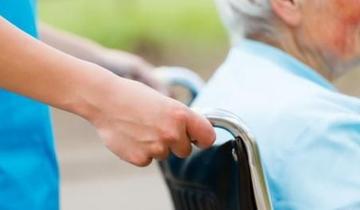Benefits of Mirror Therapy Exercise for Stroke Patients

It is widely accepted that exercise for stroke patients is the main way to improve function. Mirror box therapy is a type of stroke rehabilitation exercise and it is known to be able to improve a variety of issues faced by stroke patients. These include:
- Improving motor function
- Improving sensory awareness
- Reducing pain
- Reducing visual-spatial neglect
- Reducing spasticity and
- Improving activity of daily living performance.
It has become a popular choice of treatment for stroke as it is cheap and easy to administer independently. The National Clinical Guideline for Stroke states that "Although overall the evidence is not strong, the studies undertaking mirror therapy... do appear to show some promising results and further research studies are needed."
The exact mechanism of how mirror therapy works for Stroke patients is still not fully understood although there are plenty of case reports that highlights the benefits of using it on Stroke patients. There are two main hypotheses of how mirror therapy may help patients who suffered from stroke.
Hypothesis 1
The first is that it helps restore the primary motor cortex to have a normal balance on both sides. The primary motor cortex organises and carries out any movement your body performs. When you have a stroke, generally, one side of your brain (hemisphere) is affected. This side of the brain corresponds to the contralateral side of the body. There may become an imbalance between the two sides as the affected side may not be firing as strongly.
During stroke mirror therapy, the primary motor cortex’s excitability is affected by both the ipsilateral limb movement and seeing the contralateral limb reflected in the mirror. The actual movement of the affected limb activates the ipsilateral primary motor cortex and the observation of that action in the mirror activates the contralateral primary motor cortex. This means both hemispheres of the brain are firing as they would in someone who has not had a stroke. It is therefore thought to facilitate the cortical reorganisation appropriate for functional recovery by allowing the affected side to work a sit normally would.
Hypothesis 2
The second hypothesis is that mirror therapy helps through the use of mirror neurons. Mirror neurons are thought to be found in the frontotemporal region and superior temporal gyrus. Mirror neurons fire when an individual either performs or observes a motor action. Bilateral activation of the premotor cortex has been recorded during the observation of arm/hand movement. Increased excitability of the Primary motor cortex has been found on the side of the affected hand when viewing it in a mirror i.e. even when the hand itself is not moving. Altschuler (1999) proposed that the mirror illusion of normal movement of the affected hand substitutes for the decreased proprioceptive information and helps to recruit the premotor cortex.
Find out more on the Types of Mirror Therapy Exercises for Stroke Patients.